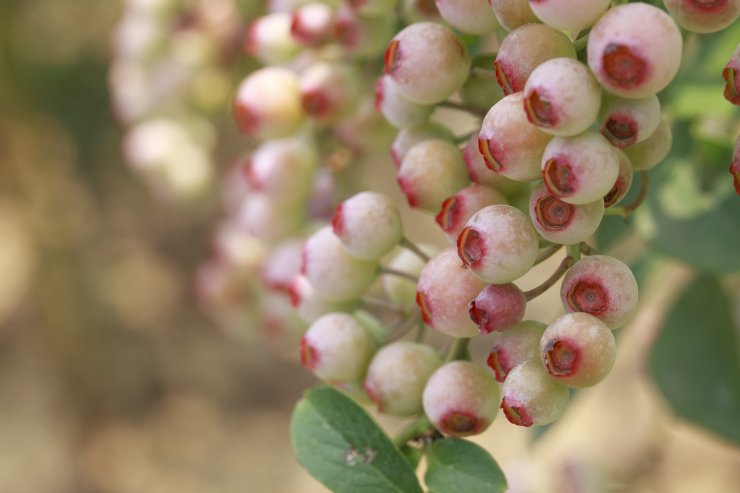
Rabbiteye blueberries on the farm
Despite the cute name, rabbiteye blueberry plants can grow to 15 feet tall and 10 feet wide by the time they mature (in seven to eight years). They produce large, tasty berries—some as big as a nickel. Their name comes from the way the berries mature: pink first, then blue.
If you grow rabbiteye plants in the right soil, they’re relatively easy to grow; they don’t have many natural pests and their nutritional requirements are fairly low. But be forewarned: rabbiteye blueberries demand acid soil in a range of 4.0 to 5.5, and their water must contain little or no calcium bicarbonate. The plants are also extremely sensitive to sodium. If you want to grow rabbiteyes, make sure your soil and water meet the plant’s requirements. Those who try to artificially manipulate the natural soil chemistry usually wind up with failed plants.
However, if your soil and water conditions are a match, you’re in for a treat. Rabbiteyes bloom in the spring and set fruit early. The harvest season runs from May through July. Once the plant reaches its full height, you’ll need a ladder to get at the berries, which grow in the top of the bush.
The fruit of the rabbiteye ripens unevenly, so you’ll find yourself going back to the same clusters again and again to pick the ripest berries. Once the berries start to ripen, you should plan to pick them every five to seven days. And don’t forget netting, and maybe some noisemakers to keep the birds at bay.
Rabbiteye cultivars include:
- Brightwell
- Climax
- Ira
- Montgomery
- Onslow
- Powderblue
- Premier
- Tifblue
Have you ever grown rabbiteye blueberries? How successful were you with your crop? Please share your tips for growing rabbiteye blueberries.


 Previous
Previous

